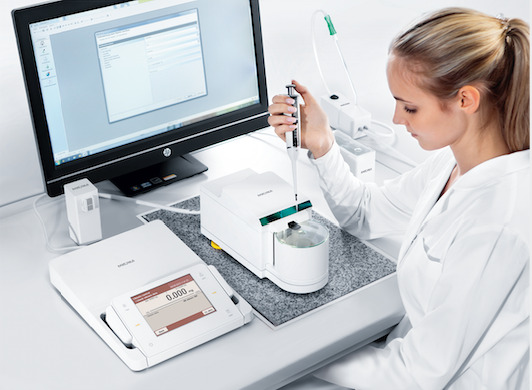
Preventing contamination with your pipettes is vital for achieving reliable results.
Preventing contamination with your pipettes is vital for achieving reliable results. It will require the identification of the possible contamination mechanisms so that they can all be adequately addressed. Aerosols, suspensions of any liquid or solid particles in a gas, are formed in various lab activities, such as pipetting with air displacement pipettes. Aerosols are the top contamination source for pipetting. They might transfer into the pipette body once unfiltered pipette tips are used and contaminate subsequent samples. A slow and careful pipetting rhythm will help minimize aerosol formation. Read on to learn about contamination types that will originate from pipetting and how to keep your pipettes clean!
Pipette-to-Sample Contamination
This contamination occurs when a contaminated pipette and pipette tips contaminate the samples. Pipette tips are available in various purity grades from many manufacturers. Purity grades could be divided into three different categories:
- No purity certifications
- Certified free of contaminants
- Sterilized to be free of any microbial life
Contaminants like DNase, RNase, or endotoxins are hard to remove by any sterilization method, so it is essential to prevent contamination around manufacturing. The absence of these contaminants is tested separately, typically by a third-party laboratory. Sterilization after manufacturing will ensure that the tips don’t contain microbial life once delivered to customers. Pipette tips could also be a source of leachables – or trace amounts of chemicals originating from materials or process equipment that might contaminate the samples. Examples of possible leachables are heavy metals, antioxidants, UV stabilizers, pigments, biocides, release agents, and surfactants. Pipette-to-contamination could be avoided by:
- Select a pipette tip with a relevant purity class for the applications
- Use sterilized filtered tips
- Always change the pipette tips after every sample
- Regularly autoclave, or disinfect your pipette or components that might come into contact with each sample.
Sample-to-Pipette Contamination
This kind of contamination will take place once the pipetted liquid and aerosol particles from it enter the pipette body. To help minimize the risk of sample-to-pipette contamination, you should:
- Always release the pipette’s push button slowly to prevent any aerosol formation and uncontrolled liquid from splashing within the pipette tip.
- Hold your pipette in a vertical position around pipetting and store your pipette in an upright position. This will prevent liquids from running into your pipette body.
- Use the filter tips to prevent the aerosol transfer from samples into the pipette’s body. Alternatively, filters could be used on pipette tip cones too.
Sample-to-Sample Pipette Contamination
Sample-to-sample contamination happens when aerosol or liquid residue from one sample is thoroughly carried over into the following sample. For example, this might occur once the same pipette tips are used various times. To avoid contamination:
- Use filter tips to prevent any aerosol transfer from the samples into the pipette body and again with the following sample.
- Always change your pipette tips after every sample.
- If you suspect a pipette contaminant, autoclave or disinfect your pipette according to your manufacturer’s instructions.
FOR ALL ISO 17025 CALIBRATION SERVICES, CONTACT LAB PEOPLE TODAY
Lab People Inc. is a trusted provider of laboratory equipment, services, supplies, and rental equipment for you and your laboratory. As an ISO 17025 accredited service organization, we stand behind our services with 100% satisfaction guaranteed for all our customers. We offer on-site and off-site calibration services for balances, pipettes, moisture analyzers, force measurement, test weights, and more. Services include preventative maintenance, SQ-Min, IQOQ, repairs, legal for trace/placed in service, verification, and more.
For more information about how we can assist you, visit our website, email us, or call us at 1-800-296-2001!
Do not forget to follow us on Facebook, Twitter, and Linkedin!
